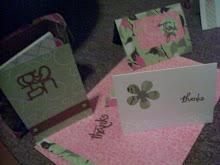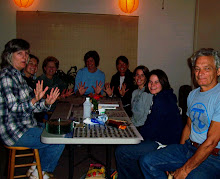Art of Pysanky

creating these intricate designs can be meditative....try concentrating on the skill and see how calm you feel!
Decorating Eggs on March 20th, 2010
~~~~~~~~~~~~~~~~~~~~~~~~~~Learn how to decorate real eggs in the style of Pysanky using kiskies and beeswax heated over candle flames.
The creativity will blossom as everyone learns about the
wax-resist/multiple dye technique that results in these gorgeous heirlooms!
This event will occur at the craft room at Hobby Lobby!
$20 per person, all supplies included, you will make as many eggs as you like during the class!
Interested in learning more, or joining us next time?
santosha@triad.rr.com
Beat the Winter Blues Mandala

This one was painted on a mirror!
The window mandala

I painted this one on the window right away to help us remember to focus as we practice. It looks like stained glass!
A Wonderful resource:
Here is some text from this site which describes the Buddhist tradition on mandalas..
http://www.exoticindiaart.com/mandala.htm
There are many ways mandalas are used now-a-days, but in the ancient tradition:
"Perhaps the most admired and discussed symbol of Buddhist religion and art is the mandala, a word which, like guru and yoga, has become part of the English language. Its popularity is underscored by the use of the word mandala as a synonym for sacred space in scholarship world over, and by its presence in English-language dictionaries and encyclopedias. Both broadly define mandalas as geometric designs intended to symbolize the universe, and reference is made to their use in Buddhist and Hindu practices.
The mandala idea originated long ago before the idea of history itself. In the earliest level of India or even Indo-European religion, in the Rig Veda and its associated literature, mandala is the term for a chapter, a collection of mantras or verse hymns chanted in Vedic ceremonies, perhaps coming from the sense of round, as in a round of songs. The universe was believed to originate from these hymns, whose sacred sounds contained the genetic patterns of beings and things, so there is already a clear sense of mandala as world-model.
The word mandala itself is derived from the root manda, which means essence, to which the suffix la, meaning container, has been added. Thus, one obvious connotation of mandala is that it is a container of essence. As an image, a mandala may symbolize both the mind and the body of the Buddha. In esoteric Buddhism the principle in the mandala is the presence of the Buddha in it, but images of deities are not necessary. They may be presented either as a wheel, a tree, or a jewel, or in any other symbolic manifestation."
We encouraged artists to use any images they wanted to symbolize their own self centering within the circle!
http://www.exoticindiaart.com/mandala.htm
There are many ways mandalas are used now-a-days, but in the ancient tradition:
"Perhaps the most admired and discussed symbol of Buddhist religion and art is the mandala, a word which, like guru and yoga, has become part of the English language. Its popularity is underscored by the use of the word mandala as a synonym for sacred space in scholarship world over, and by its presence in English-language dictionaries and encyclopedias. Both broadly define mandalas as geometric designs intended to symbolize the universe, and reference is made to their use in Buddhist and Hindu practices.
The mandala idea originated long ago before the idea of history itself. In the earliest level of India or even Indo-European religion, in the Rig Veda and its associated literature, mandala is the term for a chapter, a collection of mantras or verse hymns chanted in Vedic ceremonies, perhaps coming from the sense of round, as in a round of songs. The universe was believed to originate from these hymns, whose sacred sounds contained the genetic patterns of beings and things, so there is already a clear sense of mandala as world-model.
The word mandala itself is derived from the root manda, which means essence, to which the suffix la, meaning container, has been added. Thus, one obvious connotation of mandala is that it is a container of essence. As an image, a mandala may symbolize both the mind and the body of the Buddha. In esoteric Buddhism the principle in the mandala is the presence of the Buddha in it, but images of deities are not necessary. They may be presented either as a wheel, a tree, or a jewel, or in any other symbolic manifestation."
We encouraged artists to use any images they wanted to symbolize their own self centering within the circle!
We love to Knit!

Email us to find out when we'll have our next Knit Knight!
santosha@triad.rr.com













